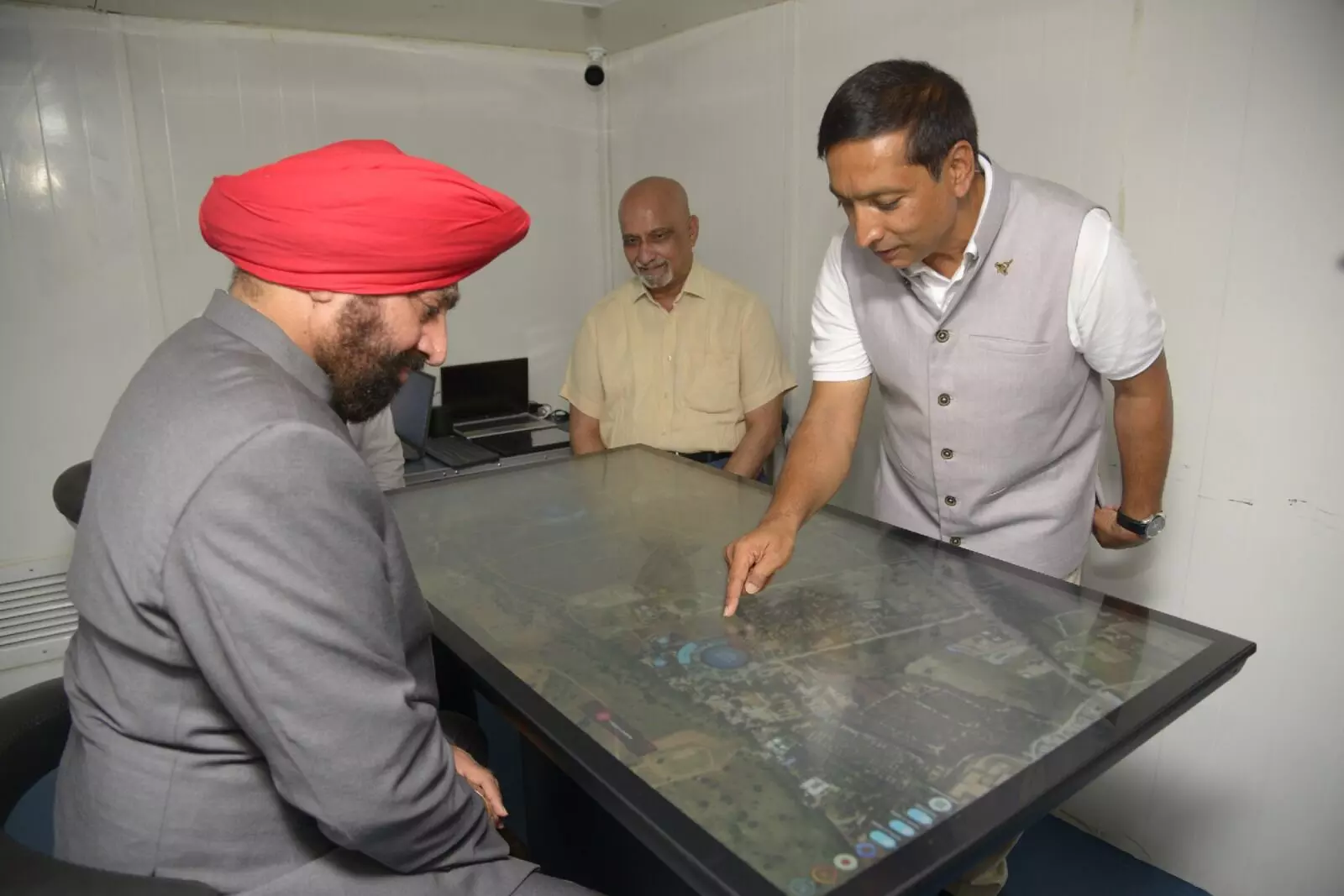‘Indrajaal’ gets wider acceptance

The Hyderabad-based Grene Robotics, which has developed ‘Indrajaal, the World’s only Autonomous Counter-Unmanned Aircraft System (C-UAS) that demonstrated last week, has started receiving inquiries from the government and private sector institutions
The Hyderabad-based Grene Robotics, which has developed ‘Indrajaal, the World’s only Autonomous Counter-Unmanned Aircraft System (C-UAS) that demonstrated last week, has started receiving inquiries from the government and private sector institutions, according to the Wg Commander Sai Mallela, the Director of this unique project, which is first of its kind in the world.
“We are confident to close deals with some government and private institutions,” said Wg Commander (retired) Sai Mallela in an exclusive interview with this Correspondent. He boasted saying that it was a significant technology, which could ensure fool-proof surveillance as well as protection to critical installations like either nuclear or other assets, of the defence and security agencies. In the same breath, he said that they are on a demonstration spree now of the effective use of their “Indrajaal” AI technology usage, effectively and decisively.
“Yes, negotiations are in the pipeline with some defense institutions as well as some private companies like banks and oil, etc.,” was his cryptic reply to a pointed question.
He said with confidence that this new AI technology shall ensure to protection of our defence assets also from heavy drone attacks, which can carry the destructive payload of missiles.
As an ex-air force officer with a tech mindset, he looks jubilant for coming up with this new technology which ensures 360-degree protection with multiple censors and also alerts the quick response systems to counter. “We have reached this significant juncture to exhibit our technology, as it entailed live demonstrations for government officials and tri-service members, showcasing the transformative potential of autonomous anti-drone defence systems in revolutionizing security measures,” he added.
This unique technology is the world’s only anti-drone system, which is capable of protecting against micro, mini, small, large, and extra-large drone classifications, revolutionizing security measures for a safer future.
The technology was unveiled recently by the Uttarakhand Governor, Lt. Gen (retd) Gurmit Singh. He said, “Indrajaal indeed marks a groundbreaking advancement in defence technology that is set to reshape the security landscape of the country’s defence, public infrastructure, and private sectors. The system not only enhances the country’s self-reliant military capabilities but is also set to address the urgent need of the hour to defend against the increasing threat of drones,” from adversaries next door.
Wg Commmand Sai, explaining Indrajaal’s design and its principle leverages as a LEGO block-like combination mechanism. This consists of 12 unique layers of technology powered by artificial intelligence for the first time in the world. The system can detect, identify, classify, track, and swiftly neutralize threats in real-time, making it a formidable force in the field.
“With 360-degree protection, Indrajaal can cover vast areas of up to 4000 sq. km and provide a comprehensive framework to defend against all classifications and levels of autonomous drones. From low RCS threats to medium and high-altitude long endurance (MALE & HALE) UAVs, loitering munitions, smart bombs, rocket showers, nano and micro drones, swarm drones, and more, Indrajaal™ can protect against all categories of ariel threats.
According to him, the threat perception from the immediate neighbors of escalating, especially with drones being used for multipurpose - from dumping narcotics to weapons to targeting defence assets on the border. He said the drone activity during the last couple of years appears to have intensified as India has encountered a significant surge in hostile UAV activity. Nevertheless, the country’s defence forces did detect quite frequently and Intelligence reports have indicated that Pakistan's spy agency, Inter-Services Intelligence (ISI) is actively planning to employ drones for smuggling weapons and narcotics into India's Jammu and Punjab regions.
Wg Command said that Pakistan's drone missions appear to have three primary objectives: surveillance of Indian security forces, narcotics smuggling, and distributing weapons within Indian territory. Disturbingly, there has been a steady increase in drone-based weapon deliveries, with 76 cases reported in 2020, 109 in 2021, 266 in 2022, and approximately 200 cases in 2023 alone. This concerning upsurge emphasizes the urgent need for heightened vigilance and the implementation of effective countermeasures to safeguard national security.
But, we have limitations on current deployments and they are; (a) The future skies will have more friendly drones than threats, (b) Stand-alone systems are not scalable and not even practical (c) Only radar-based detections are inaccurate at low RCS and close to the ground. They are even incapable of identifying the operating radio frequency, (d) Jamming can only delay but cannot stop an attack, (e) Laser weapons require a large non-moving target, and (f) There is no countermeasure to mitigate a swarm attack.
Existing point defence-based anti-UAV systems are inadequate against drone threats as they rely on physical sighting. They can’t protect large defence bases, areas like the National Capital Region of New Delhi which contains several critically important buildings, international borders, and other sensitive regions against UAVs, low RCS missiles, smart munitions, and swarm drones.
Hence, their newly developed Indrajaal alone can mitigate all of the above limitations becoming 12 proprietary technologies for the first time in the world.
He expressed confidence that their technology will get acceptance from the Union Home Ministry as well as the Defence, as the country badly needs such innovative and fool-proof technology to ensure safety cover to all our critical assets all along the border as well as in other parts of the country. This is simply because Indrajaal is an AI-powered wide-area networked system that can cover areas of up to 4000 sq. km. which no technology across the world can boast of.
Thus far, Grene Robotics deserves to take immense pride in spearheading its effort to fortify the country against ever-evolving threats.
The Hyderabad-based company professes cutting-edge, deep-tech research and development specialising in providing innovative solutions in Artificial Intelligence and Robotics. The company focuses on developing AI-driven autonomic systems for the defence, enterprise, and government sectors. These systems are designed to be self-managing and capable of learning from their environments, allowing them to dynamically evolve and adapt to changing circumstances.

















